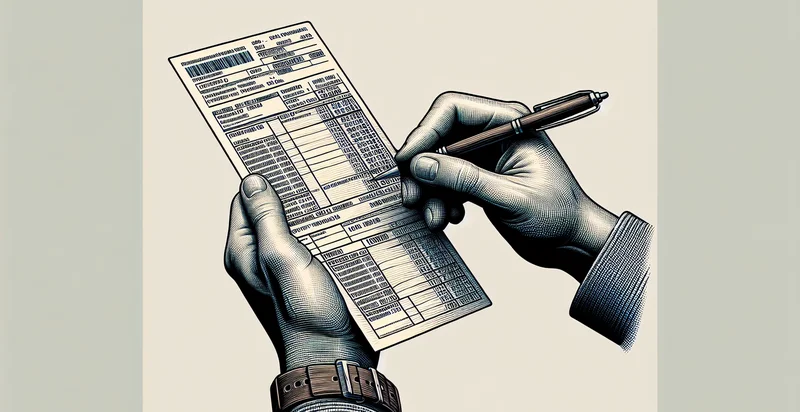Identify receipt legibility
using AI
Below is a free classifier to identify receipt legibility. Just upload your image, and our AI will predict the legibility of receipts by classifying them into readable and unreadable categories. - in just seconds.

Contact us for API access
Or, use Nyckel to build highly-accurate custom classifiers in just minutes. No PhD required.
Get started
import nyckel
credentials = nyckel.Credentials("YOUR_CLIENT_ID", "YOUR_CLIENT_SECRET")
nyckel.invoke("receipt-legibility", "your_image_url", credentials)
fetch('https://www.nyckel.com/v1/functions/receipt-legibility/invoke', {
method: 'POST',
headers: {
'Authorization': 'Bearer ' + 'YOUR_BEARER_TOKEN',
'Content-Type': 'application/json',
},
body: JSON.stringify(
{"data": "your_image_url"}
)
})
.then(response => response.json())
.then(data => console.log(data));
curl -X POST \
-H "Content-Type: application/json" \
-H "Authorization: Bearer YOUR_BEARER_TOKEN" \
-d '{"data": "your_image_url"}' \
https://www.nyckel.com/v1/functions/receipt-legibility/invoke
How this classifier works
To start, upload your image. Our AI tool will then predict the legibility of receipts by classifying them into readable and unreadable categories..
This pretrained image model uses a Nyckel-created dataset and has 19 labels, including Average Quality, Blurred, Clear, Distorted, Excellent Quality, Faded, High Contrast, Illegible, Legible and Low Contrast.
We'll also show a confidence score (the higher the number, the more confident the AI model is around the legibility of receipts by classifying them into readable and unreadable categories.).
Whether you're just curious or building receipt legibility detection into your application, we hope our classifier proves helpful.
Related Classifiers
Need to identify receipt legibility at scale?
Get API or Zapier access to this classifier for free. It's perfect for:
- Retail Expense Monitoring: This use case involves the automated verification of receipt legibility for expense reporting in retail organizations. By utilizing the receipt legibility identifier, companies can streamline the process of logging expenses, ensuring that only clear and acceptable receipts are submitted for reimbursement.
- Accounting Software Integration: Accounting software can leverage the receipt legibility identifier to enhance data accuracy during the automated data entry process. By filtering out illegible receipts, businesses can minimize errors and improve financial reporting efficiency, leading to better budget management and forecasting.
- Audit Compliance: Organizations can use the receipt legibility identifier to ensure compliance with financial audits by maintaining high legibility standards for all submitted documents. This helps in creating a transparent and accountable financial environment, reducing the likelihood of discrepancies and fraudulent claims.
- Expense Management Apps: Incorporating the receipt legibility identifier within expense management applications can improve the user experience by providing instant feedback on the quality of uploaded receipts. Users are prompted to re-upload unclear receipts, which enhances the accuracy of personal expense tracking and reporting.
- Insurance Claims Processing: Insurance companies can implement receipt legibility identification to ascertain the validity of receipts submitted with claims. By filtering out illegible documents, insurers can expedite the claims process and ensure that only valid claims with clear documentation are processed.
- E-commerce Returns Handling: The receipt legibility identifier can be utilized in handling returns for e-commerce businesses, ensuring that only clear and valid purchase receipts are considered. This can help reduce fraud in return processes and streamline the refunds that customers receive.
- Supplier Payment Processing: Businesses can use receipt legibility classification in their accounts payable processes to verify the clarity of receipts received from suppliers. By automating this step, organizations can expedite payments and maintain strong supplier relationships while ensuring compliance with documentation standards.


